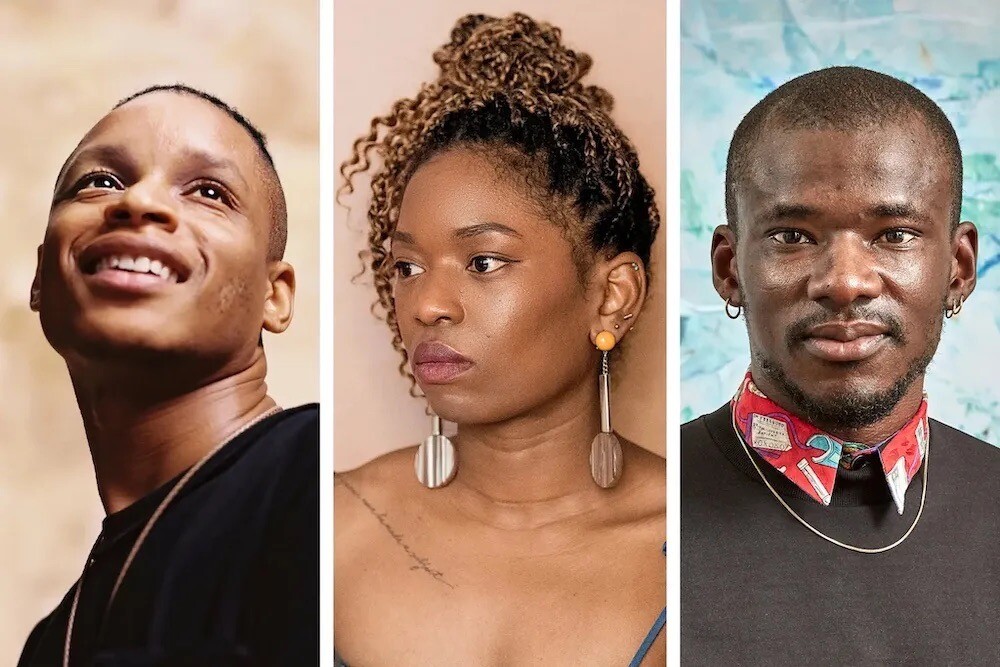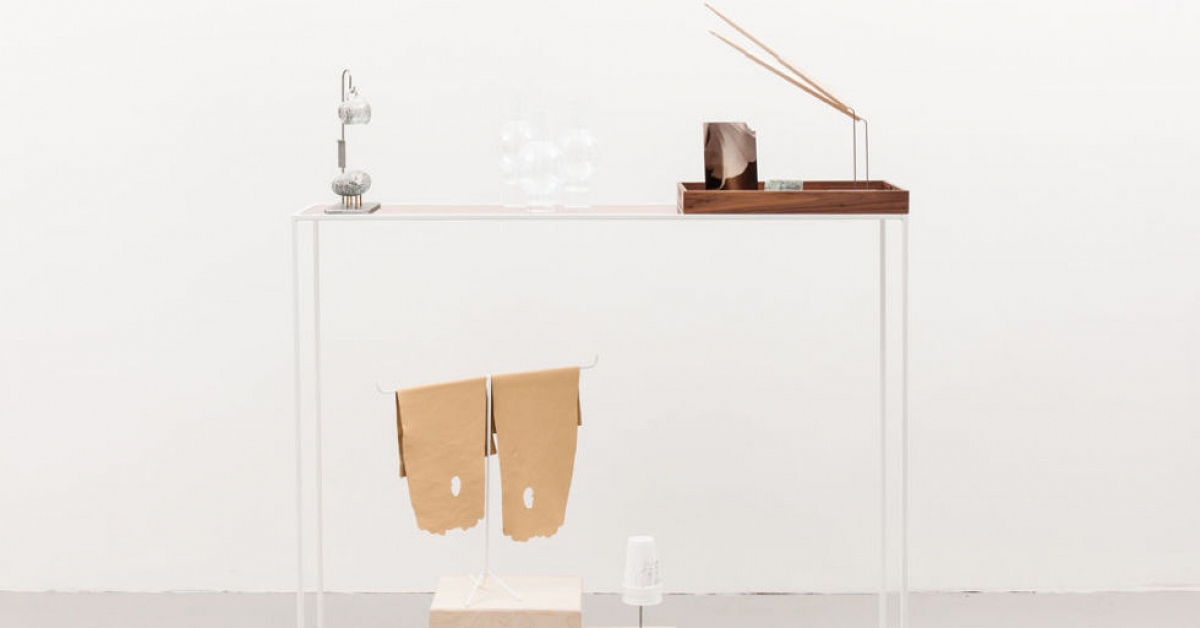Studio Museum in Harlem Announces Artists in Residence
The New York Times / Oct 14, 2022 / by Kalia Richardson / Go to Original
Devin N. Morris, Charisse Pearlina Weston and Jeffrey Meris have been selected for the residency, which comes with a $25,000 stipend, studio space, developmental guidance and an exhibition.

The Studio Museum in Harlem, renowned for shepherding artists of African descent, has announced its latest artists in residence, in a program that has fostered creative greats like David Hammons, Kerry James Marshall and Njideka Akunyili Crosby.
They are Devin N. Morris, Charisse Pearlina Weston and Jeffrey Meris. The residency comes with a $25,000 stipend, studio space, developmental guidance and a group exhibition at the end of the program.
The three artists will work from a temporary space, Studio Museum 127, as the new building is undergoing construction designed by David Adjaye, one of the architects behind the National Museum of African American History and Culture in Washington. This year, the foundation of the Glenstone Museum has endowed $10 million toward the program, the Studio Museum said.
Thelma Golden, the museum’s maestro and chief curator, said that every year, she’s exhilarated to welcome the new artists, and she encourages residents to pursue self-exploration and uncover how their work speaks to viewers.
“The selection of a new cohort of artists is not only exciting because it brings the possibility of engaging these new artists but it also brings them into this institutional history,” Golden said.
The museum, founded in 1968, earned its “studio” name from the residency program. Many artists have sought inspiration and found community in Harlem, Golden said.
Morris, who was born in Baltimore and spent the past eight months exploring Brazil and Northeastern cities in the United States, said his work draws inspirations from the spaces he inhabits and the everyday experiences of Black and queer people. He incorporates painting, photography, writing, video and found objects to create what he calls environments of personal innocence, kinship and even humor.
“I’m really interested in what it would be like to live in Harlem as an actual place, a physicality, and what that would mean to me as a Black American person,” said Morris, 36, who moved to the neighborhood this week.
Weston, 33, a Houston-born Brooklynite, is a conceptual artist who uses glass sculptures, sound, text, video and photography to communicate themes of Black representation that differ from the norm. With layering, repetition and enfolding, she said, her work creates moments of concealment as a form of Black resistance.
All of Weston’s work returns to her interest in poetics along with the gaps and opaqueness found in Black intimate spaces, she said.
“We live in a time where everything is about consumption, everything is about hyper visibility, but that visibility is not neutral,” said Weston, “and has had a violent impact on certain people and Black people in particular.”
As Meris, 31, navigates his identity as a person of African descent, he said the residency program will be a turning point in his career.
“I’m interested in what this means in terms of joining this really rich legacy of being in conversation with artists who I look to, artists who I’ve modeled my career after in a lot of ways or artists who helped me find my own path and my own voice,” Meris said.
Born in Haiti, but raised in Nassau, Bahamas, Meris said that before the pandemic, his work gave a social lens to the Black experience. But he has craved a more complex approach. Through sculptural, metalwork and casting techniques, Meris said, he marries everyday processes and objects as an expression of his own healing. In his work, he hopes to touch those who need it most.
“I’m making the art that I want to see in the world, for people that look like me,” he said.

From left, Devin N. Morris, Charisse Pearlina Weston and Jeffrey Meris, the Studio Museum in Harlem’s new artists in residence.; From left: Campbell Addy; Charisse Weston; Marc Tat
The Studio Museum in Harlem, renowned for shepherding artists of African descent, has announced its latest artists in residence, in a program that has fostered creative greats like David Hammons, Kerry James Marshall and Njideka Akunyili Crosby.
They are Devin N. Morris, Charisse Pearlina Weston and Jeffrey Meris. The residency comes with a $25,000 stipend, studio space, developmental guidance and a group exhibition at the end of the program.
The three artists will work from a temporary space, Studio Museum 127, as the new building is undergoing construction designed by David Adjaye, one of the architects behind the National Museum of African American History and Culture in Washington. This year, the foundation of the Glenstone Museum has endowed $10 million toward the program, the Studio Museum said.
Thelma Golden, the museum’s maestro and chief curator, said that every year, she’s exhilarated to welcome the new artists, and she encourages residents to pursue self-exploration and uncover how their work speaks to viewers.
“The selection of a new cohort of artists is not only exciting because it brings the possibility of engaging these new artists but it also brings them into this institutional history,” Golden said.
The museum, founded in 1968, earned its “studio” name from the residency program. Many artists have sought inspiration and found community in Harlem, Golden said.
Morris, who was born in Baltimore and spent the past eight months exploring Brazil and Northeastern cities in the United States, said his work draws inspirations from the spaces he inhabits and the everyday experiences of Black and queer people. He incorporates painting, photography, writing, video and found objects to create what he calls environments of personal innocence, kinship and even humor.
“I’m really interested in what it would be like to live in Harlem as an actual place, a physicality, and what that would mean to me as a Black American person,” said Morris, 36, who moved to the neighborhood this week.
Weston, 33, a Houston-born Brooklynite, is a conceptual artist who uses glass sculptures, sound, text, video and photography to communicate themes of Black representation that differ from the norm. With layering, repetition and enfolding, she said, her work creates moments of concealment as a form of Black resistance.
All of Weston’s work returns to her interest in poetics along with the gaps and opaqueness found in Black intimate spaces, she said.
“We live in a time where everything is about consumption, everything is about hyper visibility, but that visibility is not neutral,” said Weston, “and has had a violent impact on certain people and Black people in particular.”
As Meris, 31, navigates his identity as a person of African descent, he said the residency program will be a turning point in his career.
“I’m interested in what this means in terms of joining this really rich legacy of being in conversation with artists who I look to, artists who I’ve modeled my career after in a lot of ways or artists who helped me find my own path and my own voice,” Meris said.
Born in Haiti, but raised in Nassau, Bahamas, Meris said that before the pandemic, his work gave a social lens to the Black experience. But he has craved a more complex approach. Through sculptural, metalwork and casting techniques, Meris said, he marries everyday processes and objects as an expression of his own healing. In his work, he hopes to touch those who need it most.
“I’m making the art that I want to see in the world, for people that look like me,” he said.






